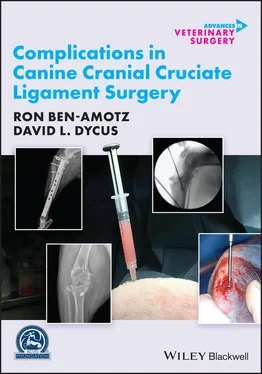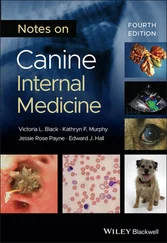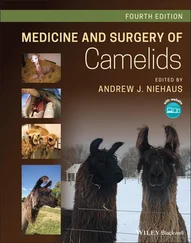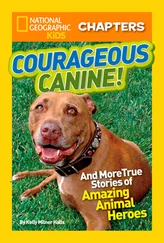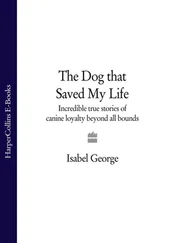Minimal clinically important difference was defined as “the smallest difference in score in the domain of interest which patients perceive as beneficial and which would mandate, in the absence of troublesome side effects and excessive cost, a change in the patient's management” [32] which was later simplified to “the smallest change that is important to patients” [33]. Although many human studies use patient‐reported outcomes to define MCID, it is often compared to objective data. The major limitations of MCID include inconsistent definitions or values for MCID, cost of treatment not being taken into consideration, and MCID often varies depending on the baseline (more severely affected patients often need a smaller improvement to be pleased with the outcome). Alternative methods to put datasets into context include utilizing confidence intervals and probability. Regardless of the statistical methods used, they should be considered prior to the onset of a study so investigators remain unbiased. Unfortunately, most veterinary journals, reviewers, and investigators rely solely on the p value to determine significance, limiting thorough evaluation of different interventions.
1 1. Arnoczky, S.P. and Marshall, J.L. (1977). The cruciate ligaments of the canine stifle: an anatomical and functional analysis. Am. J. Vet. Res. 38: 1807–1814.
2 2. Tanegashima, K., Edamura, K., Akita, Y. et al. (2019). Functional anatomy of the craniomedial and caudolateral bundles of the cranial cruciate ligament in beagle dogs. Vet. Comp. Orthop. Traumatol. 32: 182–191.
3 3. Wilke, V.L., Robinson, A., Evans, R.B. et al. (2005). Estimate of the annual economic impact of treatment of the cranial cruciate ligament injury in dogs in the United States. J. Am. Vet. Med. Assoc. 227: 1604–1607.
4 4. Witsberger, T.H., Villamil, J.A., Schultz, L.G. et al. (2008). Prevalence of and risk factors for hip dysplasia and cranial cruciate ligament deficiency in dogs. J. Am. Vet. Med. Assoc. 232: 1818–1824.
5 5. Vezzoni, A., Bohorquez Vanelli, A., Modenato, M. et al. (2008). Proximal tibial epiphysiodesis to reduce tibial plateau slope in young dogs with cranial cruciate ligament deficient stifle. Vet. Comp. Orthop. Traumatol. 21: 343–348.
6 6. Muir, P., Schwartz, Z., Malek, S. et al. (2001). Contralateral cruciate survival in dogs with unilateral non‐contact cranial cruciate ligament rupture. PLoS One 10: e25331.
7 7. Morris, E. and Lipowitz, A.J. (2001). Comparison of tibial plateau angles in dogs with and without cranial cruciate ligament injuries. J. Am. Vet. Med. Assoc. 218: 363–366.
8 8. Cook, J.L. (2010). Cranial cruciate ligament. Disease in dogs: biology versus biomechanics. Vet. Surg. 39: 270–277.
9 9. Hayashi, K., Manley, P.A., and Muir, P. (2004). Cranial cruciate ligament pathophysiology in dogs with cruciate ligament disease: a review. J. Am. Anim. Hosp. Assoc. 40: 385–390.
10 10. Kuroki, K., Williams, N., Ikeda, H. et al. (2019). Histologic assessment of ligament vascularity and synovitis in dogs with cranial cruciate ligament disease. Am. J. Vet. Res. 80: 152–158.
11 11. DeCamp, C.E., Riggs, C.M., Olivier, N.B. et al. (1996). Kinematic evaluation of gait in dogs with cranial cruciate ligament rupture. Am. J. Vet. Res. 57: 120–126.
12 12. Budsberg, S.C., Verstraete, M.C., Soutas‐Little, R.W. et al. (1988). Force plate analysis before and after stabilization of canine stifles for cruciate injury. Am. J. Vet. Res. 46: 1522–1524.
13 13. O'Connor, B.L., Visco, D.M., Heck, D.A. et al. (1989). Gait alterations in dogs after transection of the anterior cruciate ligament. Arthritis Rheum. 32: 1142–1147.
14 14. Korvick, D.L., Pijanowski, G.J., and Schaeffer, D.J. (1994). Three‐dimensional kinematics of the intact and cranial cruciate ligament‐deficient stifle of dogs. J. Biomech. 27: 77–87.
15 15. Tashman, S., Aderst, W., Kolowich, P. et al. (2004). Kinematics of the ACL‐deficint canine knee during gait: serial changes over two years. J. Orthop. Res. 22: 931–941.
16 16. Rey, J., Fischer, M.S., and Bottcher, P. (2014). Sagittal joint instability in the cranial cruciate ligament insufficient canine stifle. Caudal slippage of the femur and not cranial tibial subluxation. Tierarztl. Prax. Ausg. K. Kleintiere Heimtiere 42: 151–156.
17 17. Schaible, M., Shani, J., Ben‐Amotz, R. et al. (2017). Combined tibial plateau leveling osteotomy and lateral fabellotibial suture for cranial cruciate ligament rupture with severe rotational instability. J. Small Anim. Pract. 58 (4): 219–226.
18 18. Whitehair, J.G., Vasseur, P.B., and Willits, N.H. (1993). Epidemiology of cranial cruciate ligament rupture in dogs. J. Am. Vet. Med. Assoc. 203: 1016–1019.
19 19. Duval, J.M., Budsberg, S.C., Flo, G.L. et al. (1999). Breed, sex, and body weight as risk factors for rupture of the cranial cruciate ligament in young dogs. J. Am. Vet. Med. Assoc. 215: 811–814.
20 20. Marcellin‐Little, D.J. and Levine, D. (2015). Principles and application of range of motion and stretching in companion animals. Vet. Clin. North Am. Small Anim. Pract. 45: 57–72.
21 21. Neal, B., Ting, D., Bonczynski, J. et al. (2015). Evaluation of meniscal click for detecting meniscal tears in stifles with cranial cruciate ligament disease. Vet. Surg. 44: 191–194.
22 22. Gleason, H., Hudson, C., and Cerroni, B. (2020). Meniscal click in cranial cruciate deficient stifles as a predictor of specific meniscal pathology. Vet. Surg. 49: 155–159.
23 23. Dycus, D.L., Levine, D., and Marcellin‐Little, D.J. (2017). Physical rehabilitation for the management of canine hip dysplasia. Vet. Clin. North Am. Small Anim. Pract. 47: 823–850.
24 24. Jaegger, G., Marcellin‐Little, D.J., and Levine, D. (2002). Reliability of goniometry in Labrador retrievers. Am. J. Vet. Res. 63: 979–986.
25 25. Kim, S.E., Lewis, D.D., and Pozzi, A. (2012). Effect of tibial plateau leveling osteotomy on femorotibial subluxation: in vivo analysis during standing. Vet. Surg. 41: 465–470.
26 26. Heidorn, S.N., Canapp, S.O., Zink, C.M. et al. (2018). Rate of return to agility competition for dogs with cranial cruciate ligament tears treated with tibial plateau leveling osteotomy. J. Am. Vet. Med. Assoc. 253: 1439–1444.
27 27. Cook, J.L., Evans, R., Conzemius, M.G. et al. (2010). Proposed definitions and criteria for reporting time frame, outcome, and complications for clinical orthopedic studies in veterinary medicine. Vet. Surg. 39: 905–908.
28 28. Citrome, L. and Ketter, T.A. (2013). When does a difference make a difference? Interpretation of number needed to treat, number needed to harm, and likelihood to be helped or harmed. Int. J. Clin. Pract. 67: 407–411.
29 29. Copay, A.G., Subach, B.R., Glassman, S.D. et al. (2007). Understanding the minimum clinically important difference: a review of concepts and methods. Spine J. 7: 541–546.
30 30. Lascelles, B.D.X., Brown, D.C., Conzemius, M. et al. (2019). Measurement of chronic pain in companion animals: priorities for future research and development based on discussions from the Pain in Animals Workshop (PAW) 2017. Vet. J. 252: 105370. https://doi.org/10.1016/j.tvjl.2019.105370.
31 31. Kim, H.Y. (2015). Statistical notes for clinical researchers: effect size. Restor. Dent. Endod. 40: 328–331.
32 32. Jaeschke, R., Singer, J., and Guyatt, G.H. (1989). Measurement of health status. Ascertaining the minimal clinically important difference. Control. Clin. Trials 10: 407–415.
33 33. Stratford, P.W., Binkley, J.M., Riddle, D.L. et al. (1998). Sensitivity to change of the Roland‐Morris Back Pain Questionnaire: part 1. Phys. Ther. 78: 1186–1196.
2 Surgeon and Patient Preparation to Minimize Surgical Site Complications and Infection Surveillance Programs
Читать дальше
